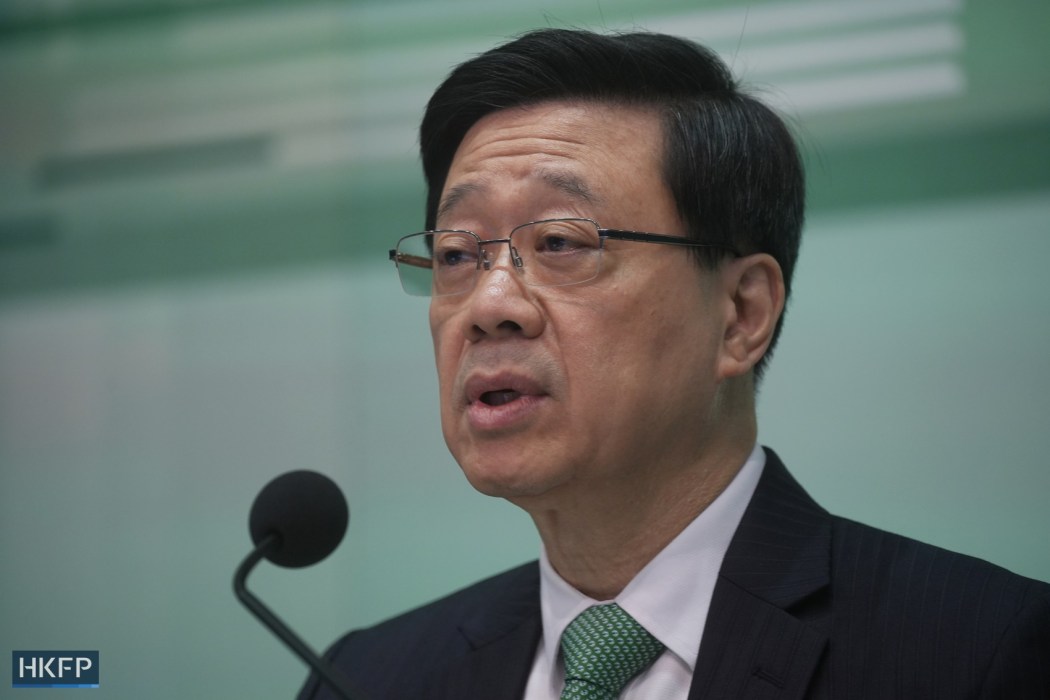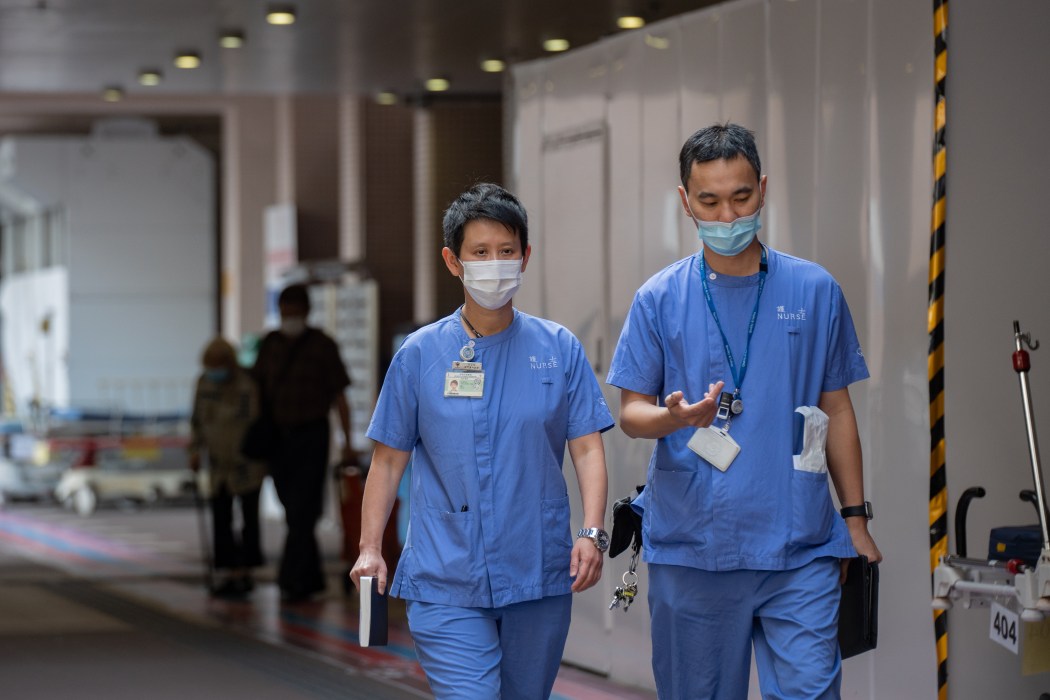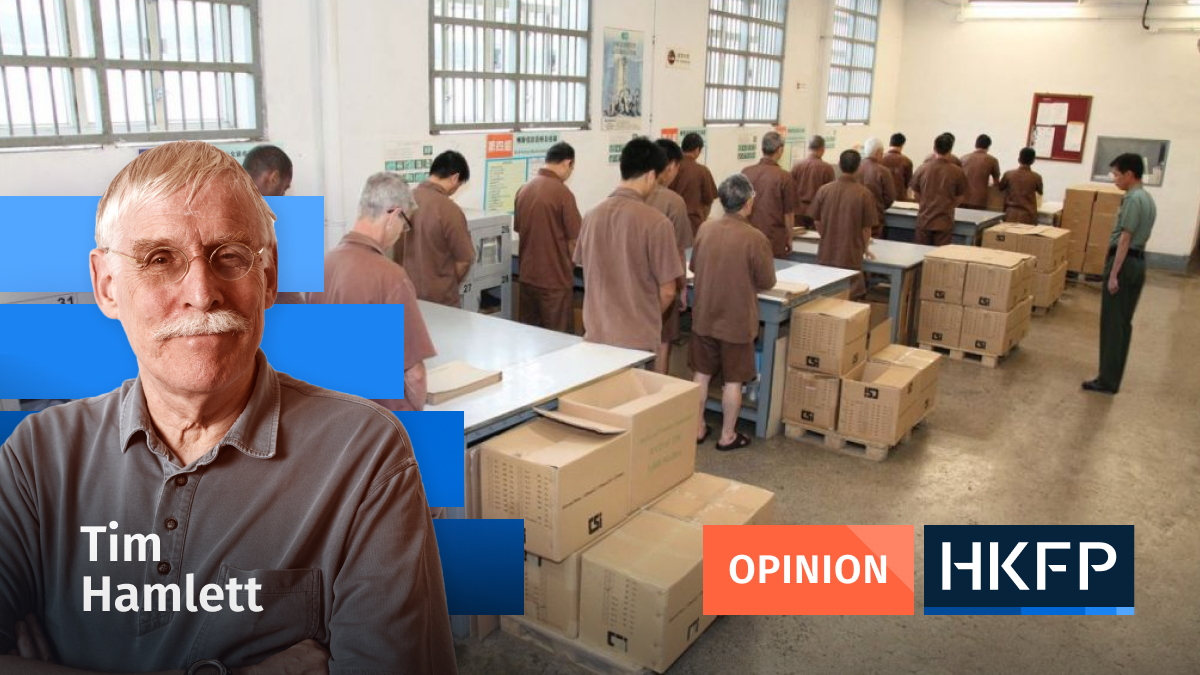Our government is now grappling with a policy dilemma of the kind which is, sadly, particularly difficult for regimes which have dispensed with such luxuries as electoral politics and independent media: what sort of health service do we want?

This is the matter of principle behind the public musings of officials and politicians – including Chief Executive John Lee – about whether there should be an increase in the small fee charged to users of the Accident and Emergency departments of public hospitals.
At the moment this is fixed at $180. This has crept up over the years. The reason given for further tinkering is the number of people turning up in accident and emergency departments with conditions which are neither the result of an accident nor an emergency.
Officials describe this as “abuse” of the service. Let us note first of all that unjustified visits to local hospitals in some number are to be expected. After all, potential patients are not doctors. It may be obvious to the medically qualified that the situation is not urgent; the patient may sincerely believe that it is.
Looking back on my personal record I can count six A and E visits: two in which I arrived in an ambulance, two which led to either stitches or immediate admission to a ward, and two cases of “abuse.” One of these was a request for help with a disintegrated and very painful tooth. The doctor could not provide anything stronger than aspirin for out-patients, and suggested washing my mouth with Scotch whisky, which worked. The other was a panic attack over a possible medicine mix-up, which had not in fact taken place: the young man fished out of the psychology department to help me was kind enough to say that I was right to seek help, just in case.

I infer from this unscientific sample that even a responsible citizen wealthy enough to use private facilities and happy to do so will in the long run develop some A and E visits, about one third of which will turn out to be unnecessary.
As a parent one also tends to be alarmist. Small children are generally not very good at describing their symptoms, if they can talk at all. I imagine few parents have not on occasion rushed to the nearest hospital, with an ensuing anticlimax. Many of us, including me, have also incurred barely hidden disapproval from a doctor who thought we should have come sooner.
The conclusion from all this is that even in a perfect world there will be quite a lot of arrivals in A and E which turn out to be erroneous. Whether the incidence is unusually high in Hong Kong we have not been told. I note, though, that in England, where emergency service is free, this was not a frequent complaint at all.
What seems to be bothering the Secretary for Health is the thought that people are deliberately choosing their local A and E because it is cheaper than a private GP. One idea he is toying with is to raise the A and E fee to the minimum sum a private doctor might charge for a visit. Another is to have a sort of sliding scale: if you arrive in a pool of blood it’s cheap, if you arrive with sniffles you pay extra.

This suggests some confusion about how our medical system is supposed to work. In the colonial days health was a matter of markets for the rich and charity for the poor. The poor did not do very well out of this.
Then Sir Murray Maclehose was sent to Hong Kong with instructions to turn the city into a colony of which a UK Labour government need not be ashamed. This produced, as well as a lot of public housing, an expectation that there would be enough clinics and hospitals to provide, at least for the grassroots, a service as good as that provided to the prosperous by the private sector.
This did not produce an imitation of the British National Health Service, in which most doctors are paid and hospitals built by the state, and treatment is generally free or nearly free. Nor did it follow the model popular in Europe, with health insurance provided at the public expense for everyone who could not afford their own.
It did embody the progressive consensus that, as the philosopher Michael Sandel puts it, “there are some things that money should not buy.” Patients could choose to “go private” but inhabitants of both sectors assured them that the medical procedures offered were the same. Private hospitals offered nicer surroundings and, as one doctor told me when considering a range of private venues for an event which I would anyway sleep through, “a Coke costs more in the Mandarin than in 7-11 but it’s the same Coke.”

The consensus that our health system should offer nearly free care to anyone who needed it was somewhat corroded in the 2000s, when some senior officials seem to have come under the influence of Milton Friedman, or indeed of Ayn Rand. Charges were introduced for some expensive medicines. One can only feel grateful that the health machinery was not subjected to the same surreptitious sabotage as the public housing programme.
But where we are is still, in principle, a health service which provides a full range of services to anyone who needs it, at affordable or no cost. I infer that it is quite inappropriate to compare the cost of an A and E visit with the cost of a visit to a private doctor. It is not the job of the government to drum up business for private practitioners.
If excessive reliance on A and E is a problem, the solution should be to divert people with minor complaints to the district clinics set up to deal precisely with out-patient problems. They are generally even cheaper. The money is not the issue here.
There was an interesting piece in one of the public prints last month by two researchers of the Our Hong Kong Foundation, in which they pointed out that old people were particularly likely to turn up in emergency rooms (as indeed they are to turn up in hospitals generally). But experiments by the Housing Association and others had shown that with guidance and help at home seniors could be persuaded to greatly reduce their A and E appearances.

The authors also made some other good suggestions. In the evening the options for people feeling ill are quite limited. Clinics close, private doctors knock off work. The hospital may be the only place open. This is a good point. The only medics working evenings in our neck of the woods are vets.
Another interesting idea is to provide an out-patient clinic next to the emergency facilities to which patients in need of less dramatic help can be politely shunted.
No doubt these and other helpful suggestions would all cost money. They still seem more attractive than extracting what will in effect be fines from elderly hypochondriacs. And the more expensive you make a hospital, the more likely it is that patients who really need treatment will delay it for financial reasons.
If money is a problem, though, the government could reconsider the arrangement under which Accident and Emergency service is provided absolutely free to civil servants, former civil servants and former civil servants’ spouses.
This would have the added advantage that decisions about raising fees would be made by people who would themselves have to pay them, which always helps.
Type of Story: Opinion
Advocates for ideas and draws conclusions based on the interpretation of facts and data.
Support HKFP | Policies & Ethics | Error/typo? | Contact Us | Newsletter | Transparency & Annual Report | Apps
| HKFP is an impartial platform & does not necessarily share the views of opinion writers or advertisers. HKFP presents a diversity of views & regularly invites figures across the political spectrum to write for us. Press freedom is guaranteed under the Basic Law, security law, Bill of Rights and Chinese constitution. Opinion pieces aim to point out errors or defects in the government, law or policies, or aim to suggest ideas or alterations via legal means without an intention of hatred, discontent or hostility against the authorities or other communities. |
Help safeguard press freedom & keep HKFP free for all readers by supporting our team

More HKFP OPINION:
HKFP has an impartial stance, transparent funding, and balanced coverage guided by an Ethics Code and Corrections Policy.
Support press freedom & help us surpass 1,000 monthly Patrons: 100% independent, governed by an ethics code & not-for-profit.










